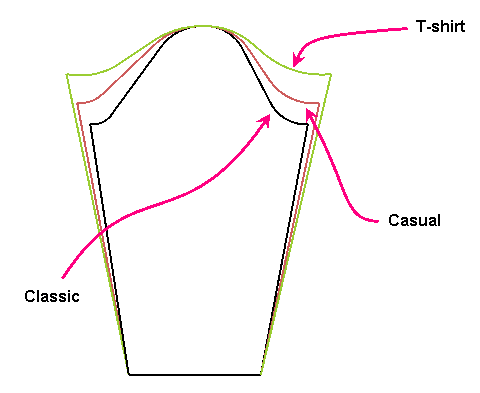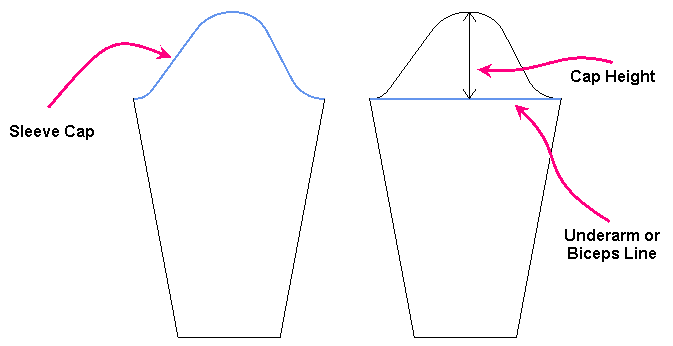Anatomy of the Sleeve
Sleeves are both functional and design elements of a garment. As functional elements, sleeves must allow for freedom of movement and comfort and must enhance the overall purpose of the garment. As design elements, sleeves should compliment the bodice to which they are attached. This article describes the anatomy of the sleeve, terminology and style options.

For more inspiring color blocking ideas, check out my Sleeves and Cuffs Pinterest Board
Sleeve Types
There are three basic types of sleeves - set in, kimono, and raglan.
- Set In Sleeves: are sewn to the bodice armholes. All set in type sleeves must be eased, gathered, darted, or tucked and sewn into the bodice armscye seam. They can be fitted or flared, cut to any length, and their hemlines finished in a variety of ways.
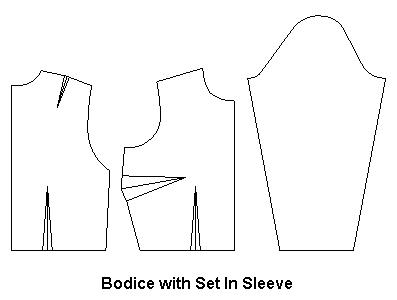
- Kimono Sleeves: are cut all in one with the front and back bodice. The kimono sleeve is always cut with a deeper armscye than the set in sleeve. Wrinkles under the arm are inherent to this type of sleeve because of the extra fabric between the bodice and sleeve.
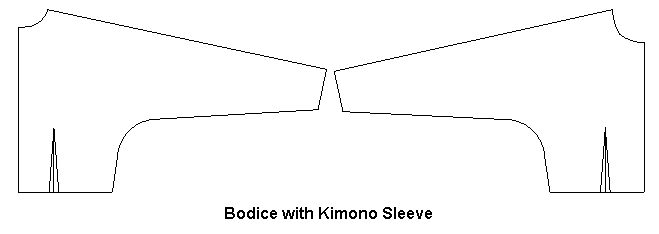
- Raglan Sleeves: have part of the sleeve attached to the bodice. A diagonal seam is formed from the neckline to the underarm. Underarm wrinkles are common in this type of sleeve, as well. Extra ease is added across the chest and the armhole is lowered to increase freedom of movement.
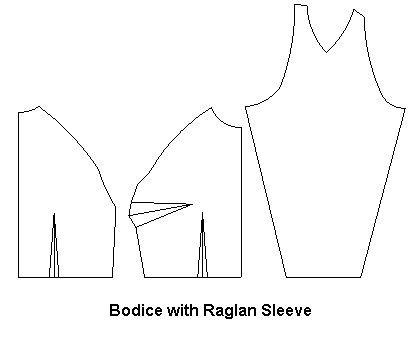
Sleeve Styles
Set in sleeves fall into three main categories - classic, casual, and t-shirt. The sleeve style is mainly determined by the height of the sleeve cap.
Classic Sleeve
The classic sleeve is the sleeve found in most traditional tailored, fitted styles. It can be drafted with or without an elbow fitting dart. It should be sewn to an armscye where the shoulder point at the armscye ends at the shoulder tip, thus the armscye is not dropped off the shoulder. The classic sleeve is a trade off between style and mobility.
- The classic sleeve is characterized by a high sleeve cap. The higher sleeve cap is much more formal and attractive when movement is not a priority.
- Cap height for the classic sleeve should be about 5 in (12.5 cm) to 6 in (15 cm).
- The armhole depth on the bodice can be raised slightly to provide a bit more freedom of movement without sacrificing aesthetics.
- Additional cap ease is needed to go over ball of the arm since the sleeve cap is high and bicep or underarm line is narrower.
- Cap ease should be between 1 1/2 in (3.75 cm) to 2 in (5 cm).
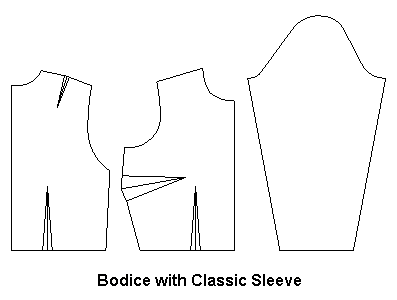
Casual Sleeve
The casual sleeve is a less tailored style. Diagonal wrinkles will form at the armscye as a result; however, greater freedom of movement is possible. The casual styles are a nice compromise between style and mobility and between formal classic styles with little freedom of movement and sloppy t-shirt styles.
- The bodice armhole shoulder point is dropped off the shoulder 1/2 to 1 inch (1.25 to 2.5 cm).
- The shoulder seam is lengthened 1/2 to 1 inch (1.25 to 2.5 cm) on the bodice and the shoulder point is raised slightly.
- The cap height should be about 3 in (7.5 cm) to 4 in (10 cm) with about 1 in (2.5 cm) ease.
- The armhole is therefore larger and the sleeve cap is also larger and so less ease is required in cap.
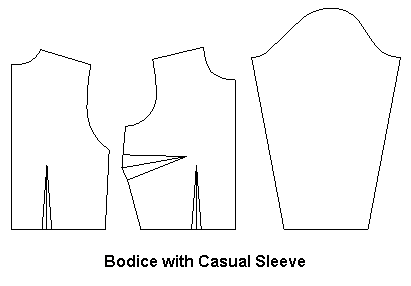
T-Shirt Sleeve
The t-shirt sleeve is a very casual style. The shoulder point on the bodice armscye is typically dropped off the shoulder more than 1 inch (2.5 cm) and the armhole is a very shallow curve. Diagonal wrinkles will form at the armscye as a result. Greater freedom of movement is possible with this style though.
- The sleeve cap height can be 0 in to 2 in (5 cm) with 0 in to .5 in (1.25 cm) ease.
- The shoulder line and shoulder slope are lengthened extensively to drop the armscye off the shoulder.
- The sleeve cap is flat and can be sewn in before the underarm seam is sewn.
- A gusset is created at the underarm for freedom of movement.
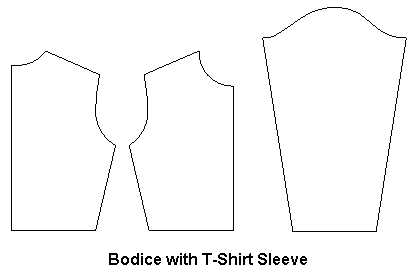
Sleeve Cap Height
The form and function of set in sleeves is dependent upon the shape and height of the sleeve cap and the style of armhole to which the sleeve is sewn. The sleeve cap is the curved top section of the sleeve from the front underarm to the back underarm. The sleeve cap height is that area of the sleeve from the biceps or underarm line to the top of the sleeve cap. The cap height will vary with each armhole and sleeve style. Changes in fullness of the cap seamline and cap height will result in dramatically different sleeve styles.
- As the cap height is shortened, the sleeve will stand or jut away from the arm at the hemline if the armscye is not dropped off the shoulder tip.
- As the cap height gets shorter, the underarm line must get longer in order to produce a sleeve cap line that can still be sewn into the bodice armscye with sufficient ease for comfort and movement.
- As the cap height is shortened, a gusset is formed at the underarm. This “gusset” is what provides the freedom of movement. It also creates folds at the underarm that are not desirable in more tailored clothing.
- If the sleeve cap height is increased above the standard fitted sleeve, the cap will extend above the normal shoulder line.
- Higher caps with more ease are more difficult to sew. They require ease stitching to mold the cap to the armhole without puckering. Fabric weight and stiffness will significantly influence the way a sleeve cap is eased into the armhole.
- Jacket and coat sleeves are often redesigned to reduce ease but not restrict movement. The shoulder line is extended past the shoulder point and the shoulder slope is lengthened.
